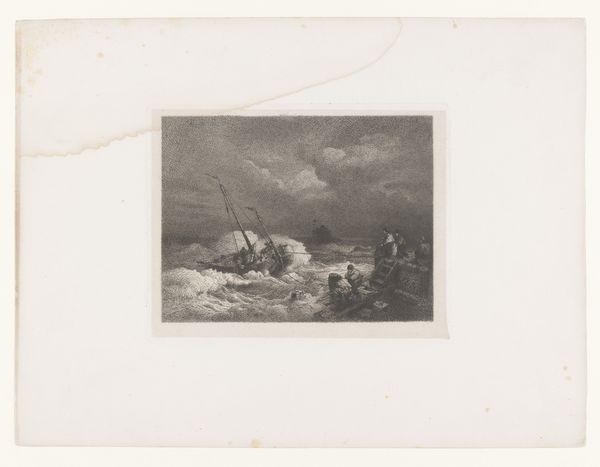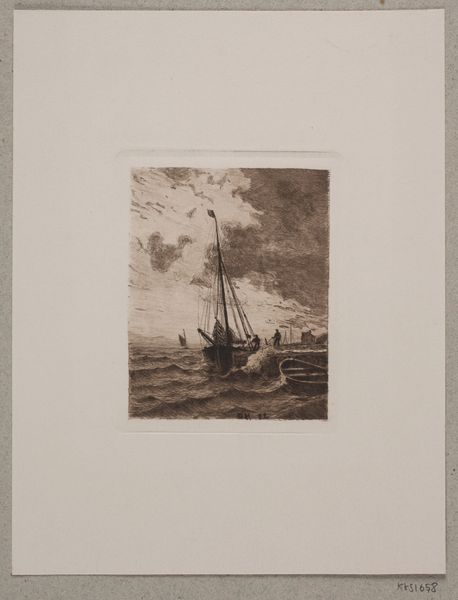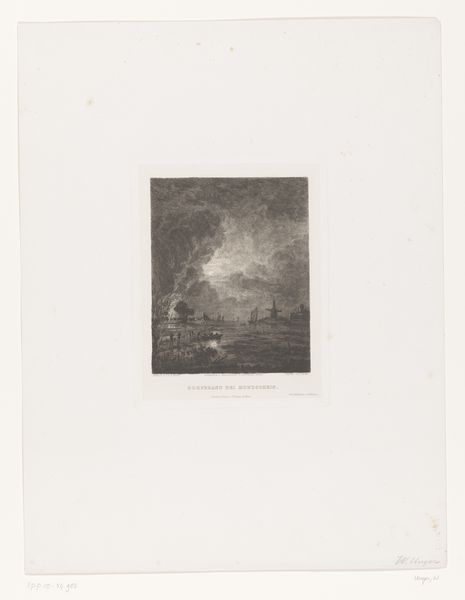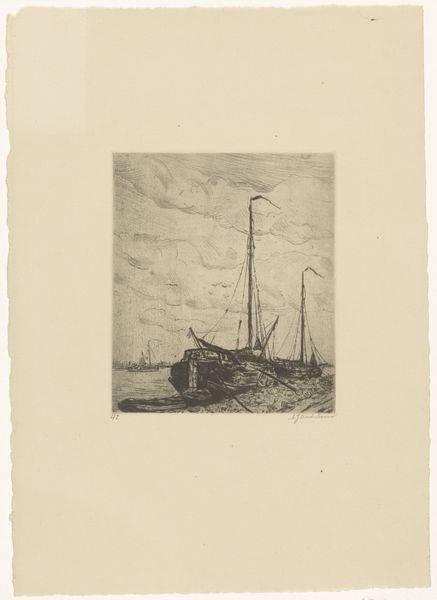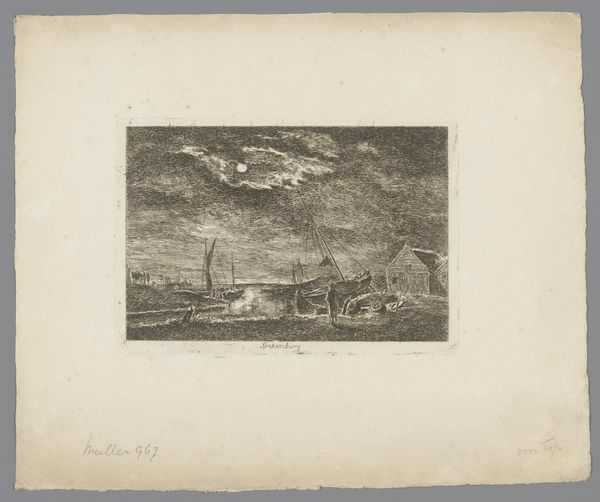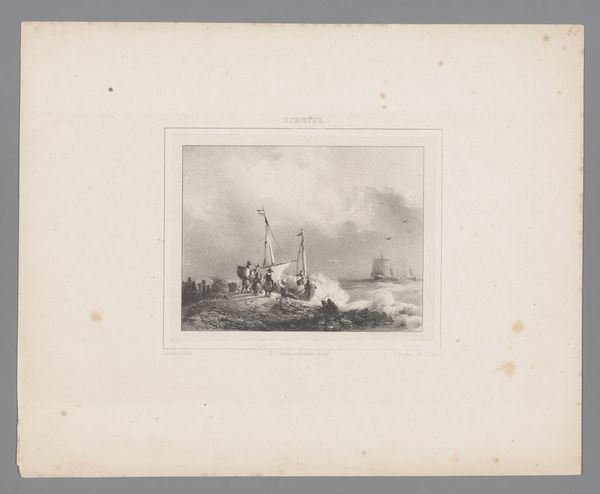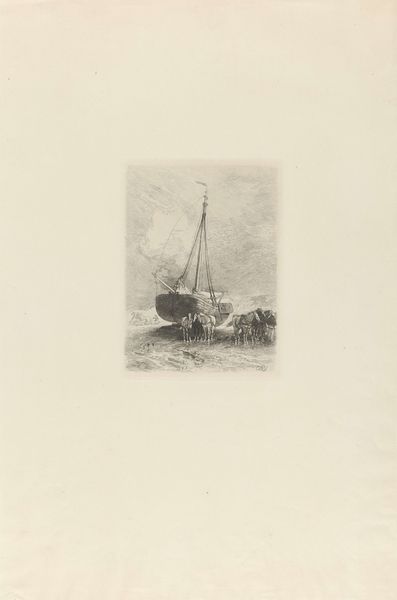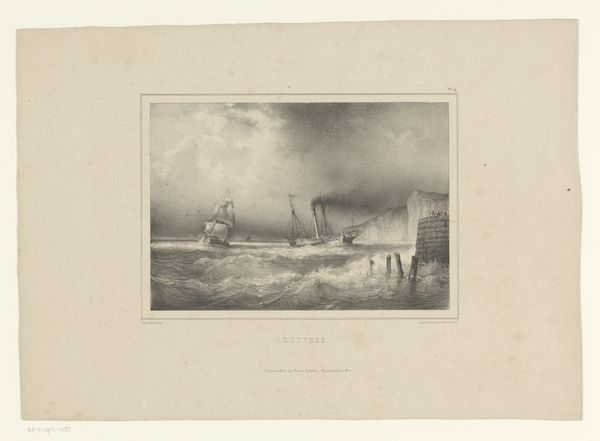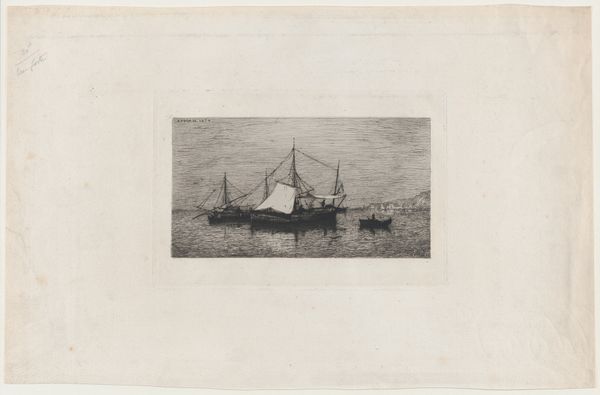
print, etching, paper
#
narrative-art
# print
#
etching
#
landscape
#
paper
Dimensions: 83 mm (height) x 61 mm (width) (billedmaal)
Curator: Before us we have "Et dampskib," which translates to "A Steamship," an etching on paper created in 1892 by Nils Severin Lynge Hansteen, housed here at the SMK, the National Gallery of Denmark. It's a rather striking piece; what catches your eye initially? Editor: The immediate impact is one of turbulent drama! The diagonal hatching conveys a palpable sense of wind and weather, pushing that small steamship forward. The smoke belching from the stack almost seems to merge with the storm clouds overhead. Curator: Indeed. And consider the historical context: late 19th-century advancements in naval technology, the increasing importance of steamships for trade and travel...This print captures a pivotal moment when sail was yielding to steam. It speaks volumes about progress and the human relationship with the natural world. Editor: Absolutely, the ship becomes a potent symbol. Historically, steamships bridge tradition and modernity. Iconographically, water often represents the unconscious or the unknown, while a vessel symbolizes the ego navigating through it. The dark tones enhance this feeling of grappling with overwhelming forces. This work could also echo a spiritual quest. Curator: A compelling thought. There's a vulnerability present too. It is only an etching and print which in its nature implies that the scene can be mass reproduced to further its reach and spread an idea to the public. But who are we kidding, Hansteen likely lacked a deep appreciation of such concepts given the way he struggled to garner fame as a landscape painter of this time! Editor: I find the flags especially significant, a bold emblem against such wild, untamed seas, implying human endeavor. To the idea that Hansteen struggled to gain popularity is a interesting thought! I wonder if Hansteen realized his artwork carried multiple symbolical messages! The stormy imagery might have inadvertently created a barrier for some viewers during the artist's time! It perhaps was against what others were painting at the time! Curator: Perhaps. Either way, seeing through our own lens today helps to view Hansteen's composition as an interesting landscape in the landscape art of the late 19th century and its commentary on mankind, industrialism, and even national pride. Editor: It is a marvelous dance with symbolic tension! The smallness of the vessel evokes a poignant awareness of one's own place within the vastness of experience. This image is just as poignant today.
Comments
No comments
Be the first to comment and join the conversation on the ultimate creative platform.
